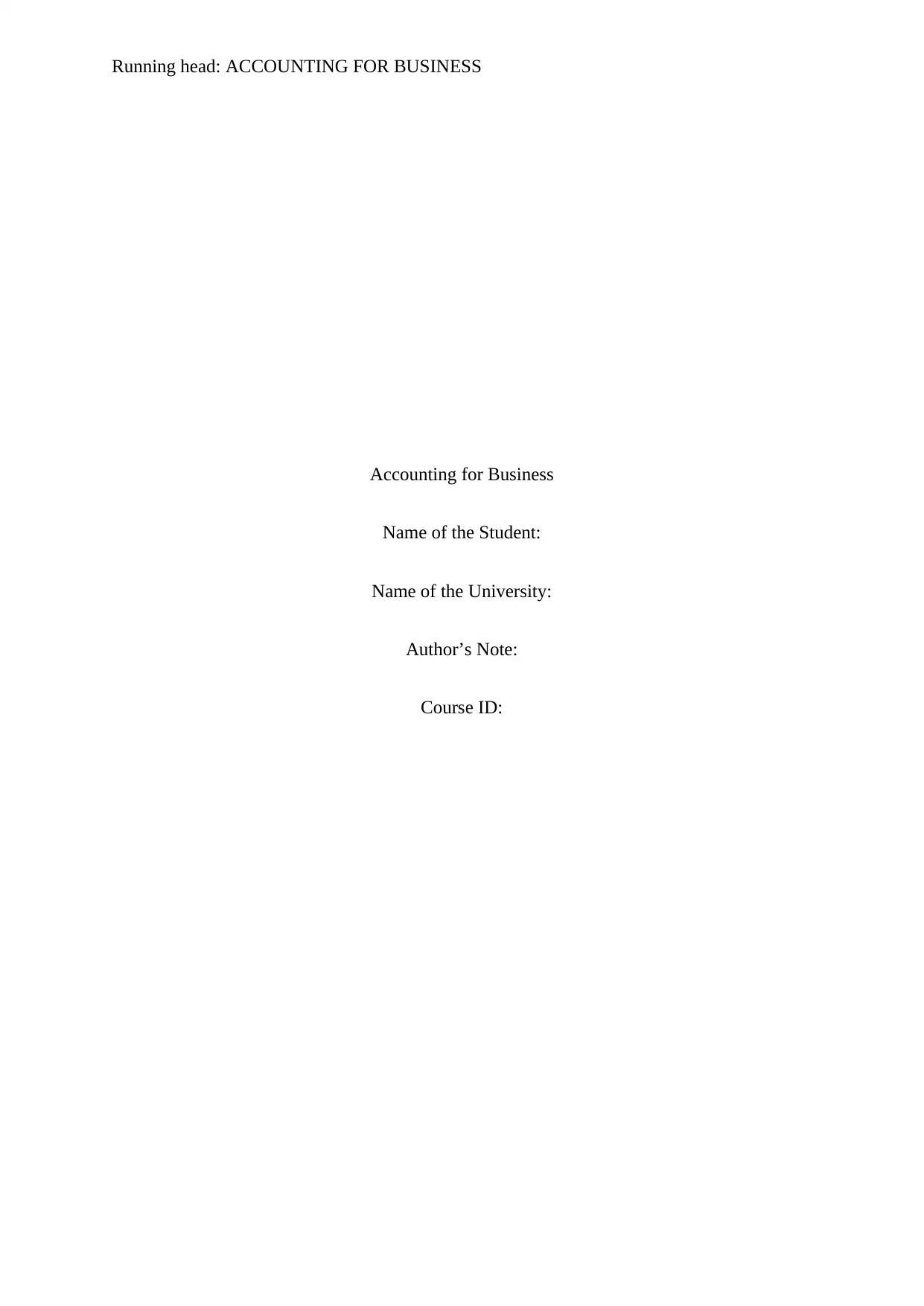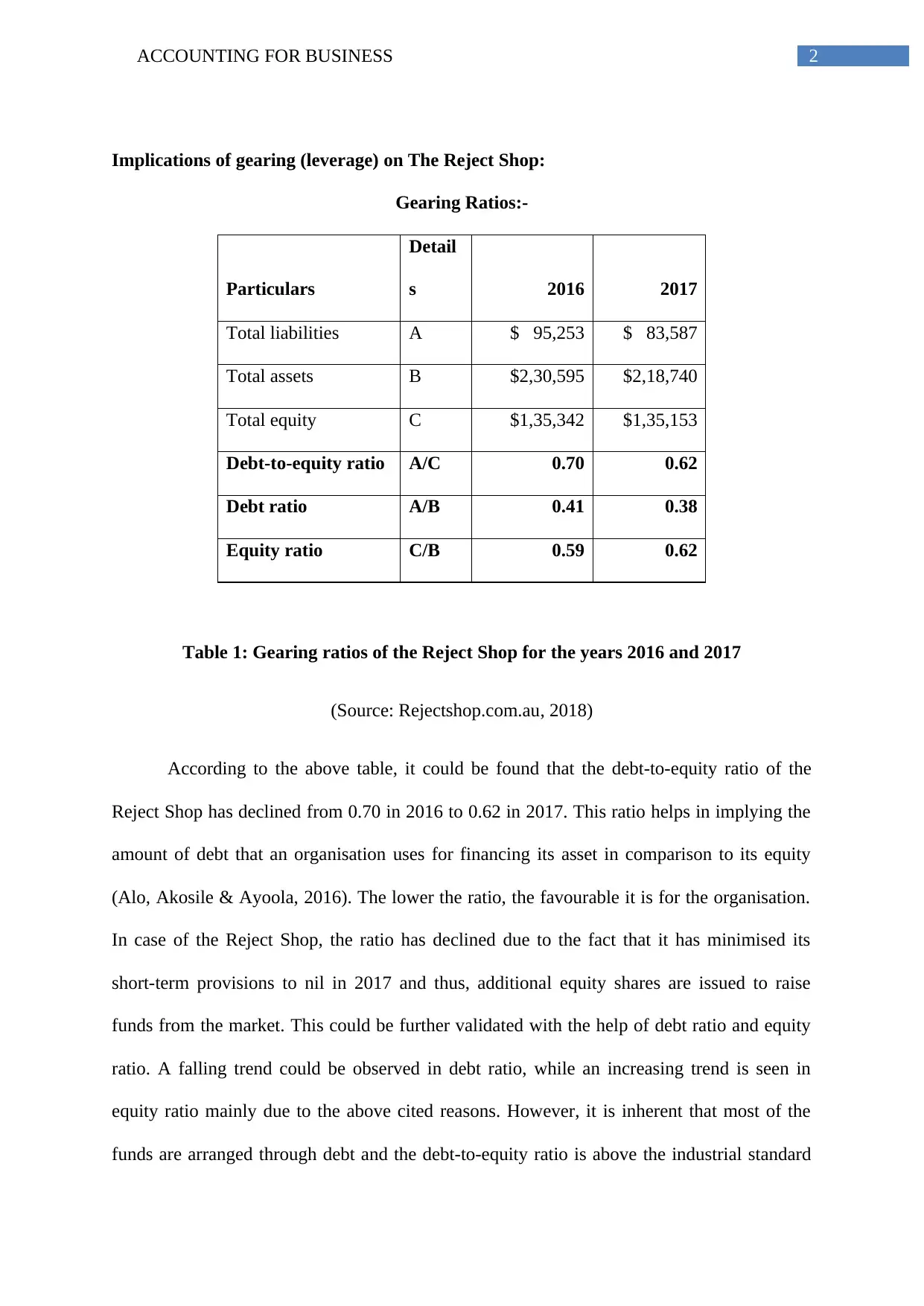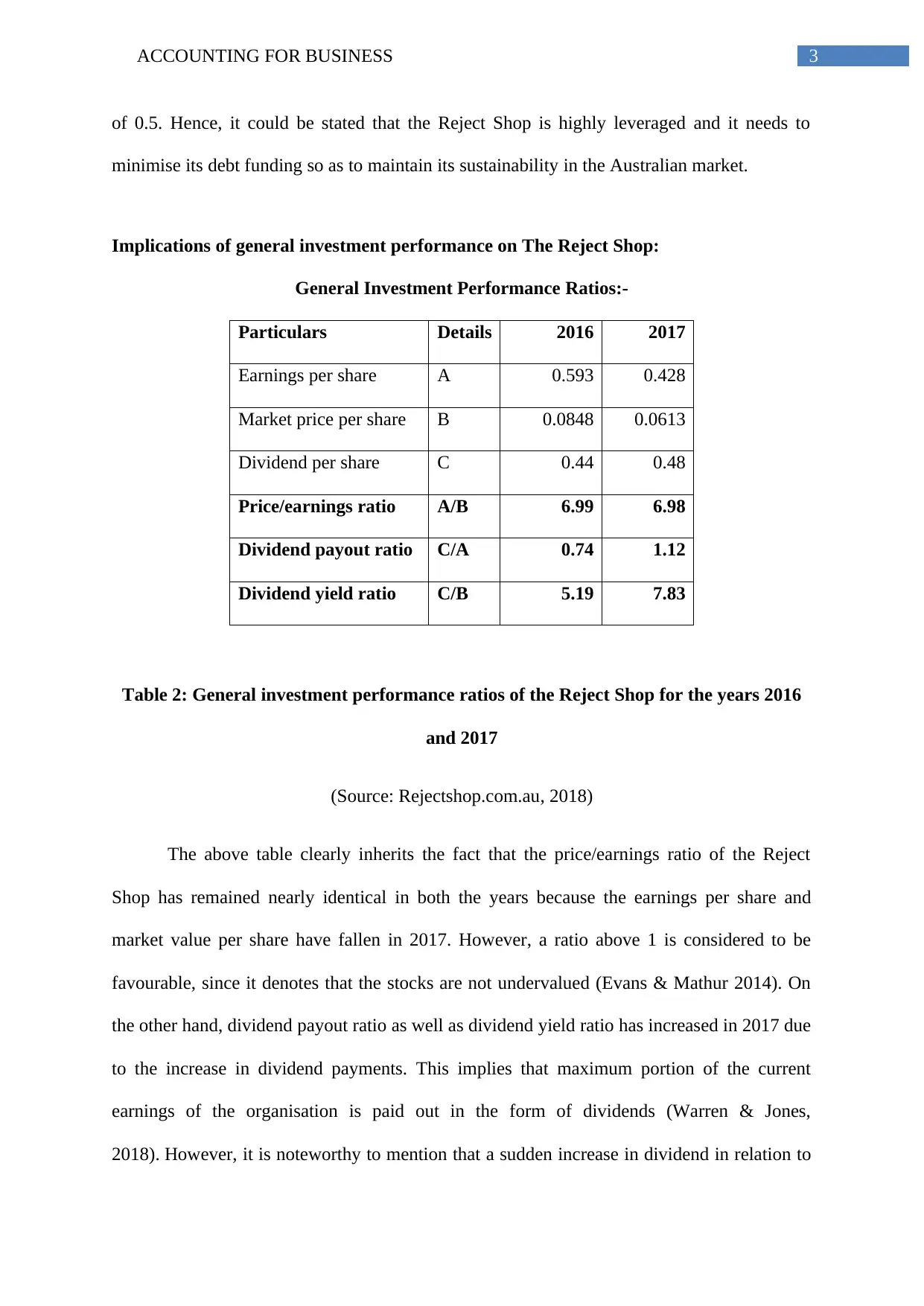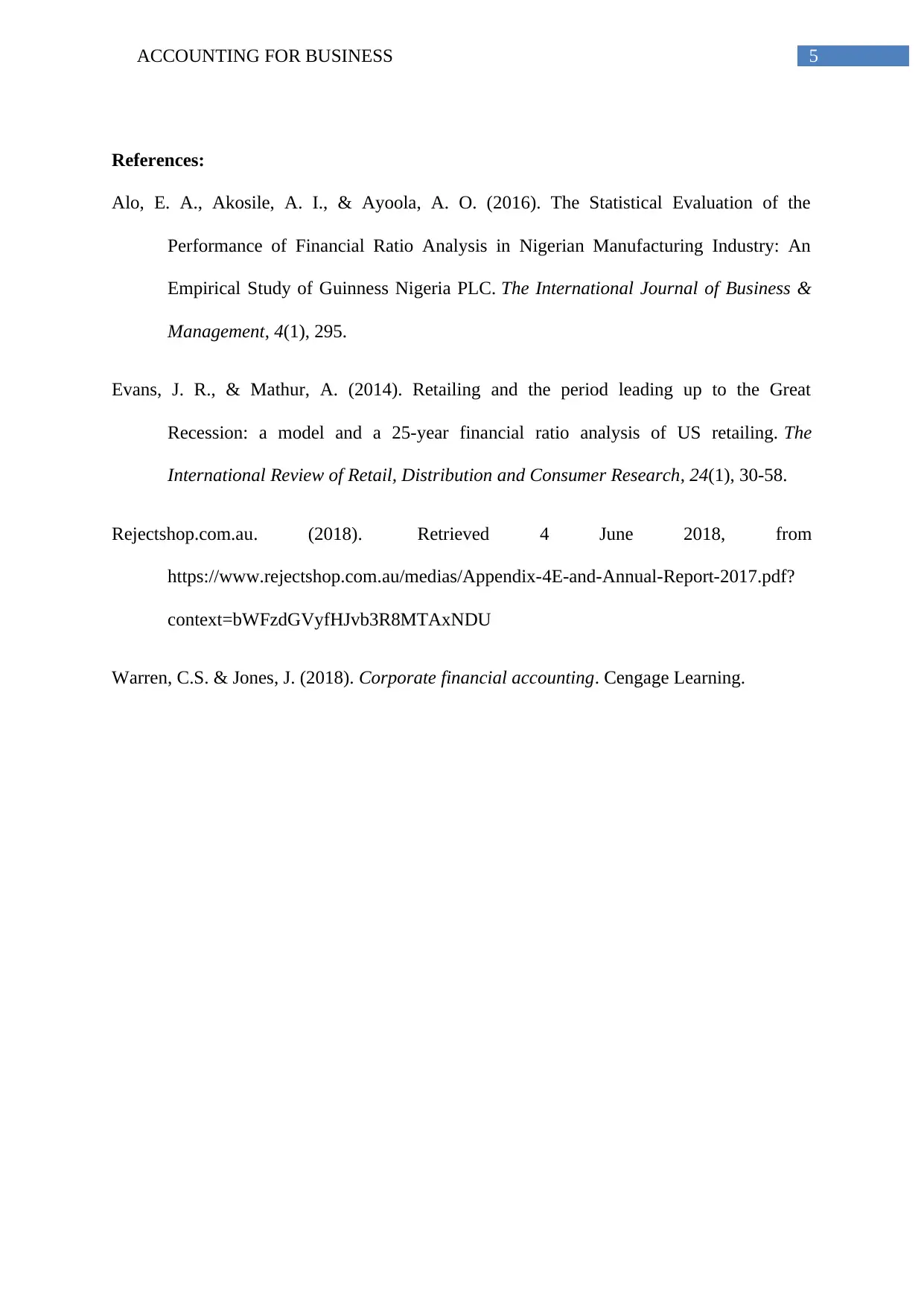Analyzing Financial Health: A Report on The Reject Shop's Performance
VerifiedAdded on 2023/06/11
|6
|796
|254
Report
AI Summary
This report provides a financial analysis of The Reject Shop, focusing on its gearing (leverage) and general investment performance. It examines the company's debt-to-equity ratio, debt ratio, and equity ratio, noting a decrease in the debt-to-equity ratio from 2016 to 2017. However, the report indicates that The Reject Shop is still highly leveraged compared to industry standards. The analysis of investment performance ratios, including earnings per share, market price per share, dividend per share, price/earnings ratio, dividend payout ratio, and dividend yield ratio, reveals that while the price/earnings ratio remained relatively stable, the dividend payout and yield ratios increased in 2017, suggesting that a significant portion of earnings is being distributed as dividends, which may indicate potential instability and lower future returns for shareholders. Desklib offers this and many other solved assignments to help students.
1 out of 6











![[object Object]](/_next/static/media/star-bottom.7253800d.svg)